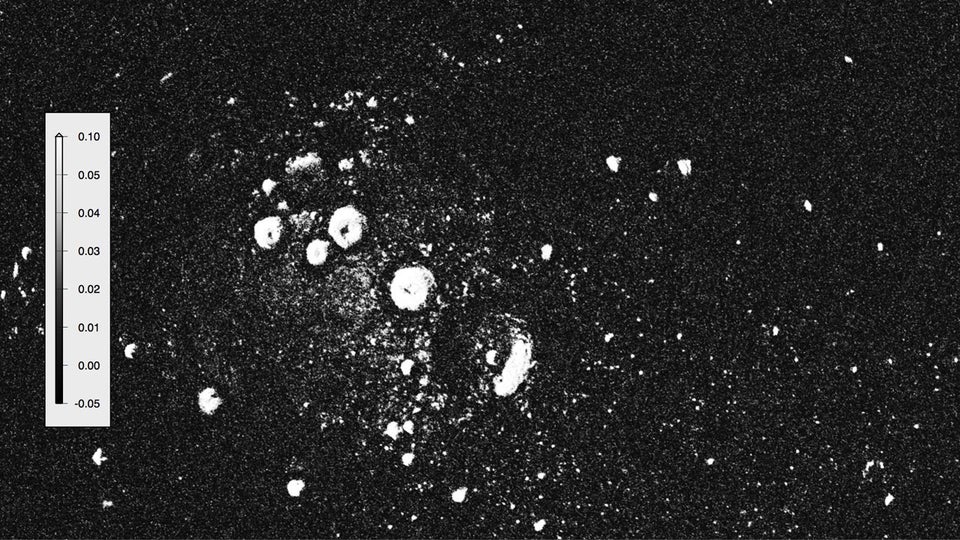
Mercury is about to get a visitor.
The NASA MESSENGER spacecraft that's been orbiting Mercury and collecting data for four years is about to run out of fuel. And when it does, it's going to hit the tiny planet's surface at about 8,750 miles per hour.
Mission operators in mission control at the Johns Hopkins University Applied Physics Laboratory (APL) in Laurel, Maryland, have been carrying out a series of orbit corrections that will delay the spacecraft's inevitable crash.
The final maneuver will take place next Friday, April 24.
"Following this last maneuver, we will finally declare the spacecraft out of propellant, as this maneuver will deplete nearly all of our remaining helium gas,” Daniel O’Shaughnessy, mission systems engineer at APL, said in a news release. “At that point, the spacecraft will no longer be capable of fighting the downward push of the sun's gravity.”
The impact is expected to take place out of view on April 30. However, scientists are hoping the fresh impact crater will give them new insight into the planet.
"Having an impact crater, even a small one, whose origin date is precisely known, will be an important benchmark," Sean Solomon, the mission’s principal investigator and director of Columbia University's Lamont-Doherty Earth Observatory in Palisades, New York, told Space.com.
The MESSENGER (MErcury Surface, Space ENvironment, GEochemistry and Ranging) spacecraft was launched in 2004 and entered the planet's orbit on March 18, 2011.
While the spacecraft's mission may be ending, scientists are celebrating all they've learned about Mercury over the past four years.
“For the first time in history we now have real knowledge about the planet Mercury that shows it to be a fascinating world as part of our diverse solar system,” John Grunsfeld, associate administrator for the Science Mission Directorate at NASA said in a news release. “While spacecraft operations will end, we are celebrating MESSENGER as more than a successful mission. It’s the beginning of a longer journey to analyze the data that reveals all the scientific mysteries of Mercury.”
Those mysteries may even hold a clue to the formation of life on Earth.
As Mercury is the planet closest to the sun, temperatures can reach 800 degrees Fahrenheit. However, craters at the poles are permanently in shadow -- and in 2012, MESSENGER discovered evidence of water ice deposits and other volatile material locked in those polar regions. It also found a dark layer covering the ice, believed to be organic compounds.
Scientists think those materials arrived on the planet much in the way MESSENGER will arrive: by crashing there.
“The water now stored in ice deposits in the permanently shadowed floors of impact craters at Mercury’s poles most likely was delivered to the innermost planet by the impacts of comets and volatile-rich asteroids,” Solomon said in a news release. “Those same impacts also likely delivered the dark organic material.”
The evidence found by MESSENGER lends support to the theory that comets and asteroids delivering ice and organic compounds may have played a role in the formation of life on Earth.

